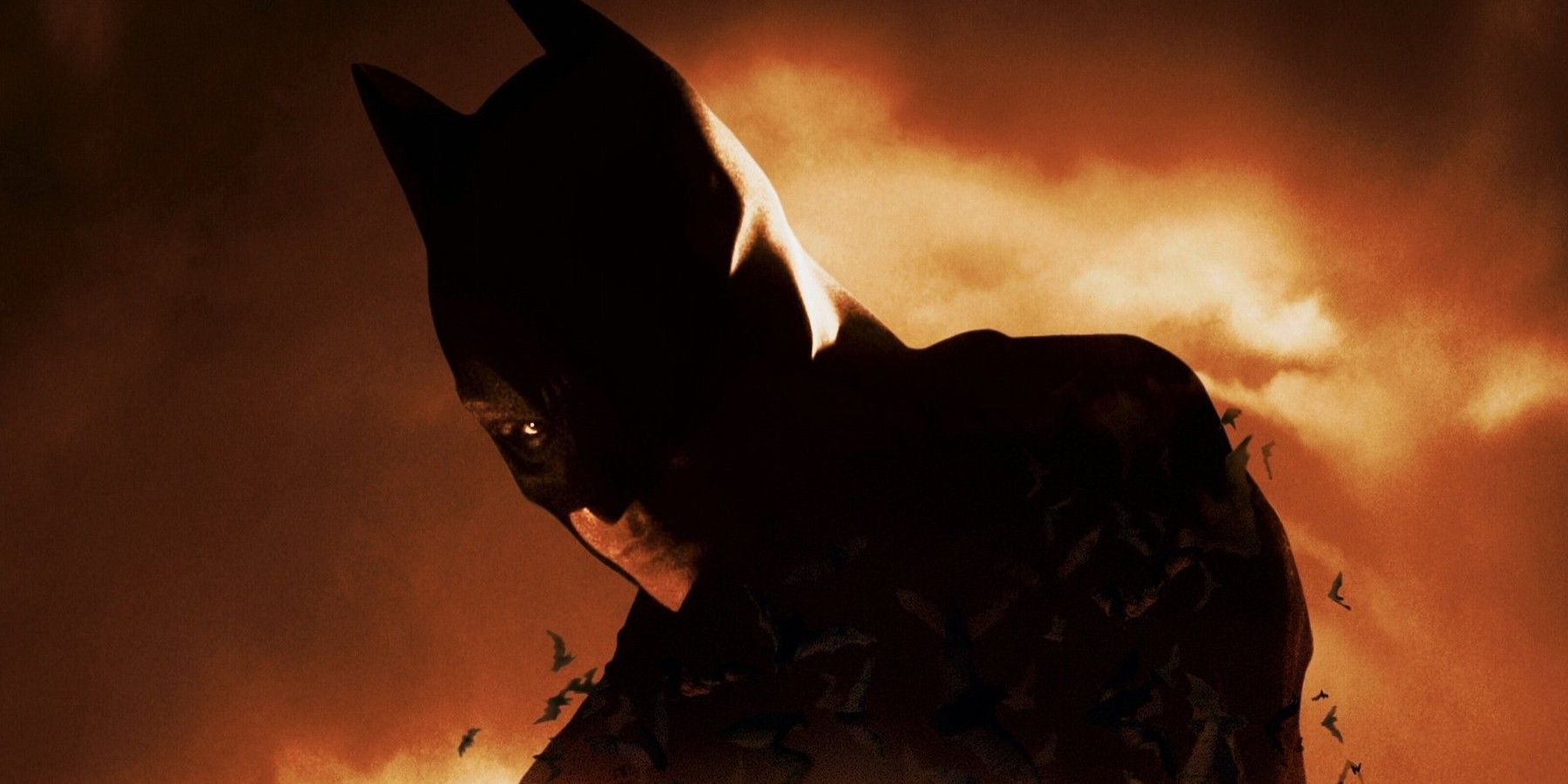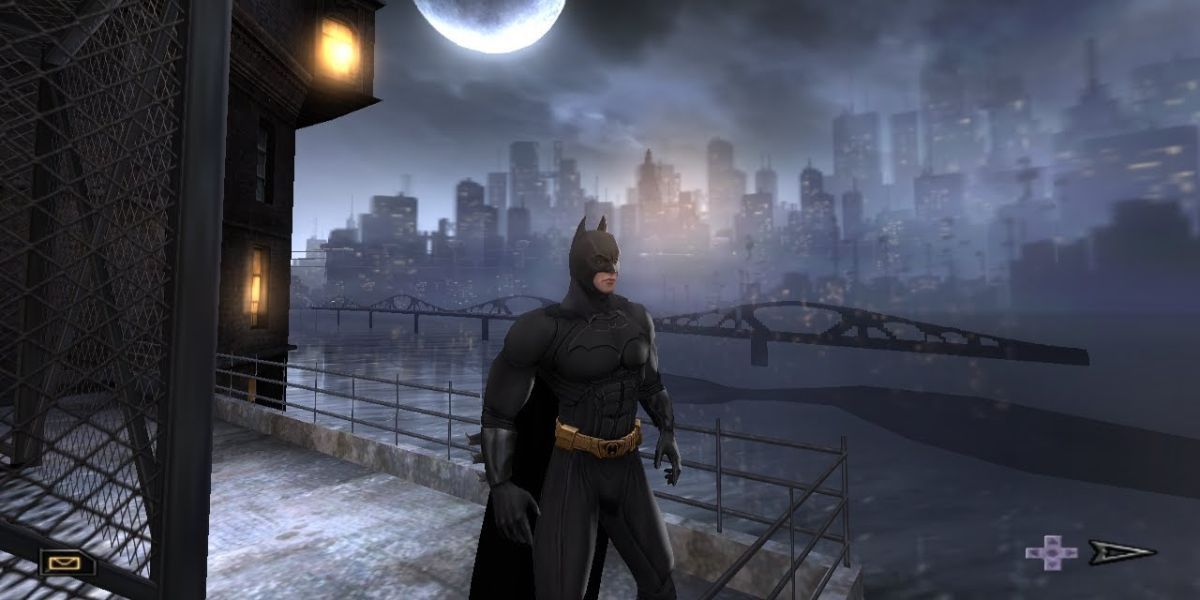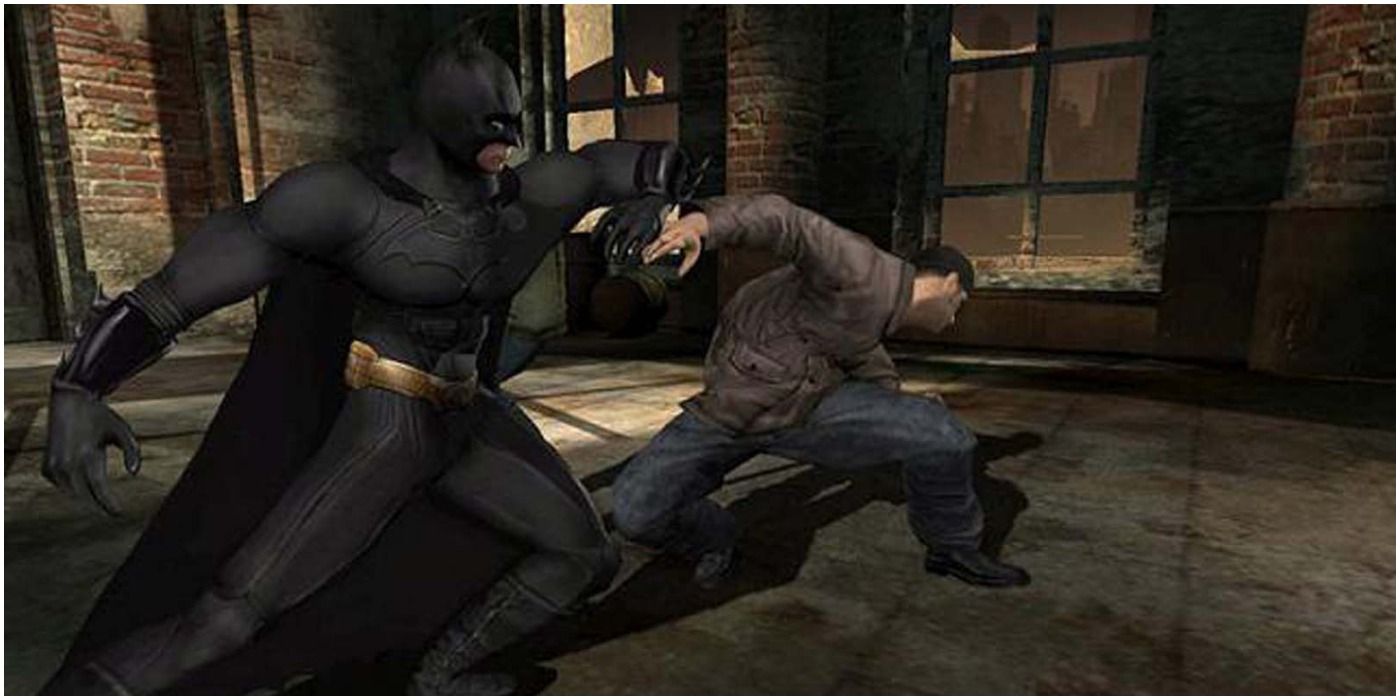Of all DC's line-up of superheroes, none has more video game adaptations than the Dark Knight himself. Starting with 1986's Batman on the Amstrad and ZX Spectrum, the Caped Crusader has had more than his fair share of video game titles, with one cropping up every few years or so. But despite the sheer quantity of Batman games, very few are highly regarded today. Rocksteady's excellent Arkham series is often pointed out as the definitive Batman video game experience, but the Batman Begins tie-in game actually laid quite a bit of groundwork for the future series.
Releasing in 2005 for the Xbox, PlayStation 2, and GameCube, Batman Begins closely follows the story of its cinematic counterpart, putting the player directly in the boots of a newly trained Batman. Though the game is quite short, coming in at just under five hours, the gameplay mechanics and overall presentation of the game have stuck with many who have played it over the years. To fans of the Arkham series, a few core elements may seem a little familiar.
Batman Begins Has Surprisingly High-Quality Presentation
Though it may only feel like yesterday for some, 2005 was almost two decades ago, and many games from that era are really starting to show their age. While games that took a more stylistic approach to art direction still look fairly decent today, such as the original Psychonauts and TimeSplitters: Future Perfect, games that chose a more realistic art style tend to look much rougher. While Splinter Cell and Call of Duty 2 pushed boundaries back in the day, revisiting them now only serves to highlight how far realistic graphics have come since.
That being said, Batman Begins is a surprisingly good-looking game, even when held up to today's standards. Despite some clunky and awkward character animations, Batman Begins manages to capture the atmosphere of its source material very well. Lighting is used very effectively throughout the game to give each environment that now-iconic Nolan Batman look, with windows emitting an eery orange glow, and the night sky showcasing a gigantic moon.
While the Arkham series goes for a more comic-based visual design, the more realistic aspects of the series' visuals appear quite similar to Batman Begins, with similar-looking sky-boxes and architecture. This is especially apparent in Batman Begins' driving stages, where players are zipping under archways that are distinctly Gotham-esque, just as players do in Arkham Knight.
The Arkham Asylum stages also hold quite a similar visual design to the interior environments in Arkham Asylum, with similar wall textures and layouts. This comparison feels even more apt when players spend most of the stage sneaking through the Asylum's vents, something that Arkham fans are all too familiar with.
The character models in Batman Begins are also surprisingly well-polished, with the actors' likenesses being used for all the main cast of characters. The vast majority of Batman Begins' cast also lend their voices to the game, which adds a whole new level of authenticity and polish to the experience. Batman Begins also has some impressive cape physics, which would go on to be a lauded aspect of Arkham Asylum.
Laying The Gameplay Groundwork For Arkham
While much of Batman Begins' visual and audio presentation could be theorized as laying the groundwork for the Arkham games, it's the game's core mechanics that are more likely to have inspired Rocksteady's stellar series. In particular, the game's stealth and combat mechanics share some interesting similarities with the Arkham franchise.
Quite a bit of Batman Begins' gameplay revolves around light stealth mechanics that task the player with sneaking around an environment, picking off goons one-by-one, usually from above. In a stroke very similar to Arkham, players can even use a vertical takedown to grab an enemy below them.
Batman Begins also uses its stealth mechanics to fuel a Fear system, whereby the more enemies taken down by Batman, the more scared they become, indicated by a heart rate monitor on the top left of the HUD. Once enough enemies have been taken out, and the Fear gauge reaches maximum, any remaining enemies are left completely vulnerable to Batman's hand-to-hand attacks. Maxing out the Fear gauge will also allow the player to interrogate the last remaining enemy, which is another element found in the Arkham games.
Although Batman Begins doesn't use Arkham's ingenious freeflow combat, it does share a few similarities with the successor. Using the Mortal Kombat 4 engine, Batman Begins' combat is comparable to a brawler, with an emphasis on linking together punches and kicks to create a combo, and guarding the occasional hit from an opponent. The real point of similarity between Arkham and Begins' combat is the addition of fighting multiple enemies at once.
While the player can't counter their opponents in Batman Begins, they can lock-on to one target, while using multi-attacks to damage all the foes surrounding them. It lacks the fluidity of Arkham's freeflow mechanics, and the camera can get trapped quite easily, but the ability to take on multiple foes at once was a fairly novel concept for a Batman game at the time.
A few classic Batman video game elements are on full display throughout Batman Begins, with a glide ability being present from the get-go, along with a selection of gadgets that aid in combat as well as environmental puzzles. The driving missions in Batman Begins might also conjure up similar images of Arkham Knight, as the Tumbler's boost mechanics are reminiscent of the Batmobile's functionality.
It's unclear whether or not the Arkham series was directly influenced by the Batman Begins tie-in game, but it's easy to draw several key comparisons between the two. It's interesting to see just how far Batman games have come, in a relatively short amount of time as well.
Batman Begins is available on GameCube, PlayStation 2, and Xbox.



